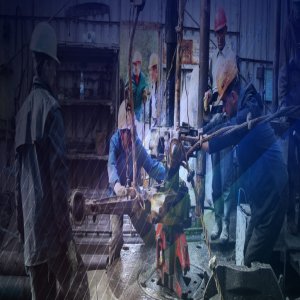Changes Coming to Way Operators Work

STORY INLINE POST
Q: How will Sapura continue to provide the quality offshore services during and in the immediate aftermath of the COVID-19 crisis?
A: The COVID-19 crisis forced the company to review work health and safety procedures, which will be adapted according to the evolution of the pandemic in the country and the guidelines established by the government for each of its phases. At this time, our activities are concentrated with independent operators and we believe that it is with them that we will continue to operate in the short term, so that our efforts will continue to focus on providing quality services and guaranteeing the safety of operators’ personnel, as well as Sapura’s and its subcontractors and service providers.
Even though we currently do not have contracts with PEMEX in their field development projects since they are concentrated with national companies, there are areas of opportunity where synergies can be created to work together with them. In both cases, the establishment of measures to prevent the spread of the virus such as restricting the mobility of people, mainly to personnel from countries with the highest number of contagion cases, establishing quarantine periods and applying tests to personnel prior to boarding the vessels, will help to reduce the risk of contagion, even when this has an impact on the development of the project.
Q: What type of changes do you foresee?
A: In addition to the COVID-19 crisis, the drop in the cost of the oil barrel, as well as the results of the agreements taken by OPEC+ for a production cut over the next two years, it is expected that there will be changes in the manner and times in which independent operators will develop their projects in Mexico.
However, there are work schedules in the contracts with CNH that must be met regardless of the external environment. The fall in oil prices will force operators to search for solutions to fulfill the contracts commitments, implementing actions that can reduce production costs. For example, if an operator had intended to use an FPSO, it could now be more expensive than originally planned, so they could look for a different alternative or maybe seek to share infrastructure with neighboring blocks operators.
As for PEMEX, based on the position it took during the negotiation of the agreement with the OPEC+ Group, it can be expected that it will continue with its plans to increase the development of fields with the construction of new infrastructure. In this scenario, Sapura will be prepared to continue providing quality services to both private operators and Pemex.
Q: Sapura won the EPCTI contract for the Hokchi Field. How far have these plans developed?
A: The plan is moving forward well and the satellite platform has been installed. Hokchi will be able to start drilling in April and the company is expecting to hit first oil in May. The central wellhead platform is being built and we hope it will be installed by the second half of 2020. The satellite platform and all project’s subsea pipelines were installed using the vessel Sapura 3500. This vessel holds all the technology and capacity needed for platform installation and pipelaying which has enabled Sapura to submit competitive offers to our clients.
For platform fabrication we used the services of the subcontractor COMMSA. In the future we hope to continue working with Hokchi, possibly participating in alliance with manufacturing companies that have fabrication yards and we would focus on the offshore scope of the project.
Q: How did Sapura support Eni’s fast-track development of its Area 1 asset?
A: For the development of phase 1, that is Mizton, the scope included the installation of the platform, pipelaying to shore, including the shore approach using directional drilling (HDD) and onshore pipelaying to deliver oil production to the San Ramon separation battery and gas production to the San Ramon compression station. During the construction phase of the onshore pipeline, contingencies had to be resolved due to the difficulty in obtaining permits from both landowners and environmental restrictions, using HDD for the sections where the necessary authorizations could not be obtained.
This problem is common in the state of Tabasco and to this it must be added that the capacity of PEMEX facilities is limited to handle the production levels that are generated in offshore fields.
ENI is currently starting the second phase of the project with the development of Amoca and is already contemplating the installation of an FPSO that could be the final solution for managing the production of its fields. The Sapura group has experience in fields “fast track” conceptualization and development in Southeast Asia and could provide this type of service to operators in addition to the provision of infrastructure construction services.
Q: What is the status of Sapura’s relationship with PEMEX?
A: The relationship between PEMEX and Sapura has been satisfactory. To date we have delivered both pipelaying and platform installation works complying with quality and safety requirements in accordance with the contractual terms, for this reason PEMEX considers us as an option to support them in the execution of works for which they currently have contracts with Mexican companies.
Sapura has already participated in the preparation of proposals for tenders with several of the Mexican companies in the field, we have even worked together with some of them, as is the specific case of Arendal. Sapura has the firm intention to continue providing its services for the development of the offshore industry in Mexico, either with independent operators or with Pemex, participating jointly with Mexican companies or independently, according to the conditions of the project and the availability of our resources.








 By Peter Appleby | Journalist and Industry Analyst -
Tue, 04/28/2020 - 14:01
By Peter Appleby | Journalist and Industry Analyst -
Tue, 04/28/2020 - 14:01
















